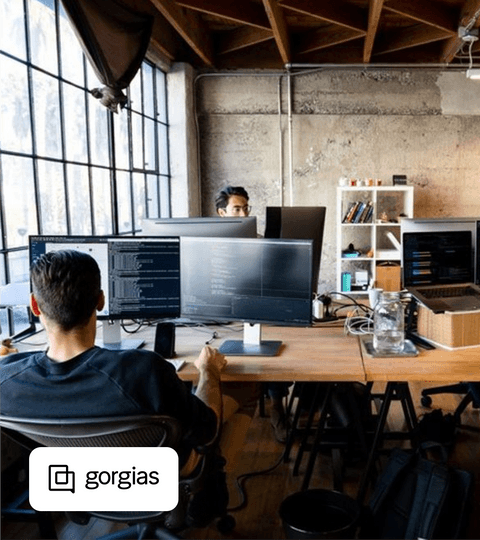Alex Plugaru is the co-founder and CTO of Gorgias, a customer service platform specialized in serving ecommerce companies. Alex leads Gorgias’ 100-person product & engineering organization whose main goal is to meet and exceed the expectations of their fast-growing customer base by continuously delivering exceptionally good software.
While Gorgias’ engineering organization has been using Swarmia since 2021, Alex recognizes that in many ways, their need for a software engineering intelligence platform like Swarmia has only increased over time.
What changed since 2021 is that the bar got a lot higher. A lot of companies are trying to make their operations more efficient, consolidating software, and trying to find the solution that is the most effective in increasing the productivity of their team.

Co-Founder & CTO
For Gorgias, the changing market conditions have led to two things: 1) forcing the engineering leadership to improve the way they sequence and track strategically important work, and 2) moving upmarket to correspond to changes in demand.
I think it was Jason Lemkin who coined the term hyperfunctional SaaS, which pretty accurately describes the situation we’re in. It basically means you’ve got to do everything: you’ve got to do reliability, you’ve got to do enterprise, it’s got to be cheap, it’s got to be better in every way.
Co-Founder & CTO
With increasing pressure from the market, Alex considers it more important than ever to foster a culture of transparency and ownership. His goal is to give every team, manager, and director access to data that helps them make better decisions locally as well as tools that help them systematically eliminate the bottlenecks that slow them down.
Serving the whole engineering organization with relevant insights and powerful tools
When Alex first found out about Swarmia in 2021, he was skeptical whether it was the right time for the engineering organization to start looking into developer productivity metrics. However, he quickly understood that the real benefit in a tool like Swarmia aren’t the metrics, but the conversations teams start having both amongst themselves and with the wider organization as a result of the new kind of visibility.
Once I started looking into Swarmia, I quickly realized that not only does it help me ask the right questions about developer productivity and happiness but it also gives our engineers tools to speed up their workflows.
Co-Founder & CTO
At Gorgias, software engineers and their managers use Swarmia every day, while engineering directors, VPs, and the CTO, Alex, look at the data on a weekly and monthly cadence.
Speeding up pull request flow in teams
Before adopting Swarmia, Gorgias’ software engineering teams had already started having discussions about stale pull requests and the difficulty of getting their code reviewed as quickly as they would have wanted. By looking into the flow insights in Swarmia, the teams found three key insights about code reviews:
- In all teams, there were outlier pull requests that were not touched for multiple days or even weeks while open.
- Some of the teams also noticed that their relatively long review times were mostly caused by cross-team reviews taking significantly longer than internal team reviews.
- The teams also noticed that they lacked common guidelines for code review best practices.
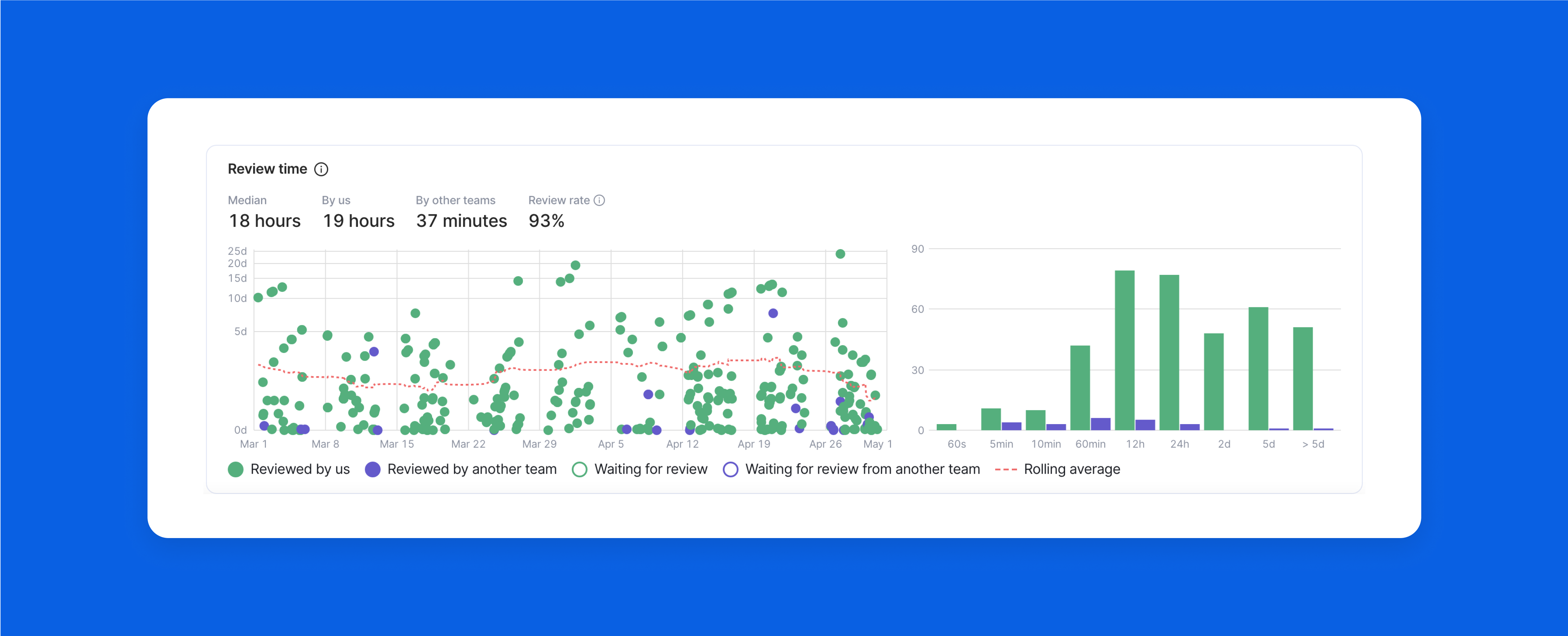
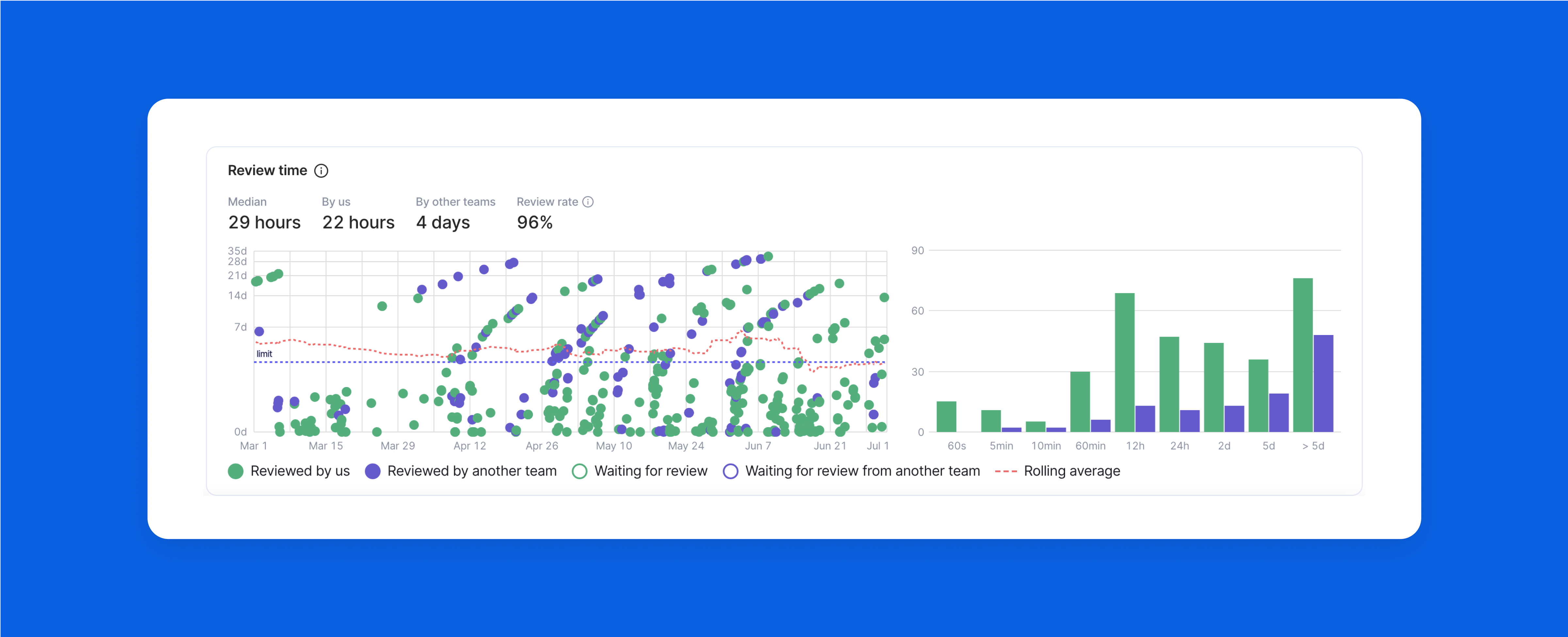
We used Swarmia's flow insights to validate our hypotheses with data and drill down to what’s slowing down our flow of delivery. This helped us conclude what to improve and how.
Co-Founder & CTO
Gorgias’ engineers also immediately found Swarmia’s two-way integration between GitHub and Slack useful. After setting relevant working agreements in Swarmia to limit work in progress and set acceptable targets for code review time, the teams were able to get a daily digest to their team’s Slack channel to help them stay on top of ongoing work.
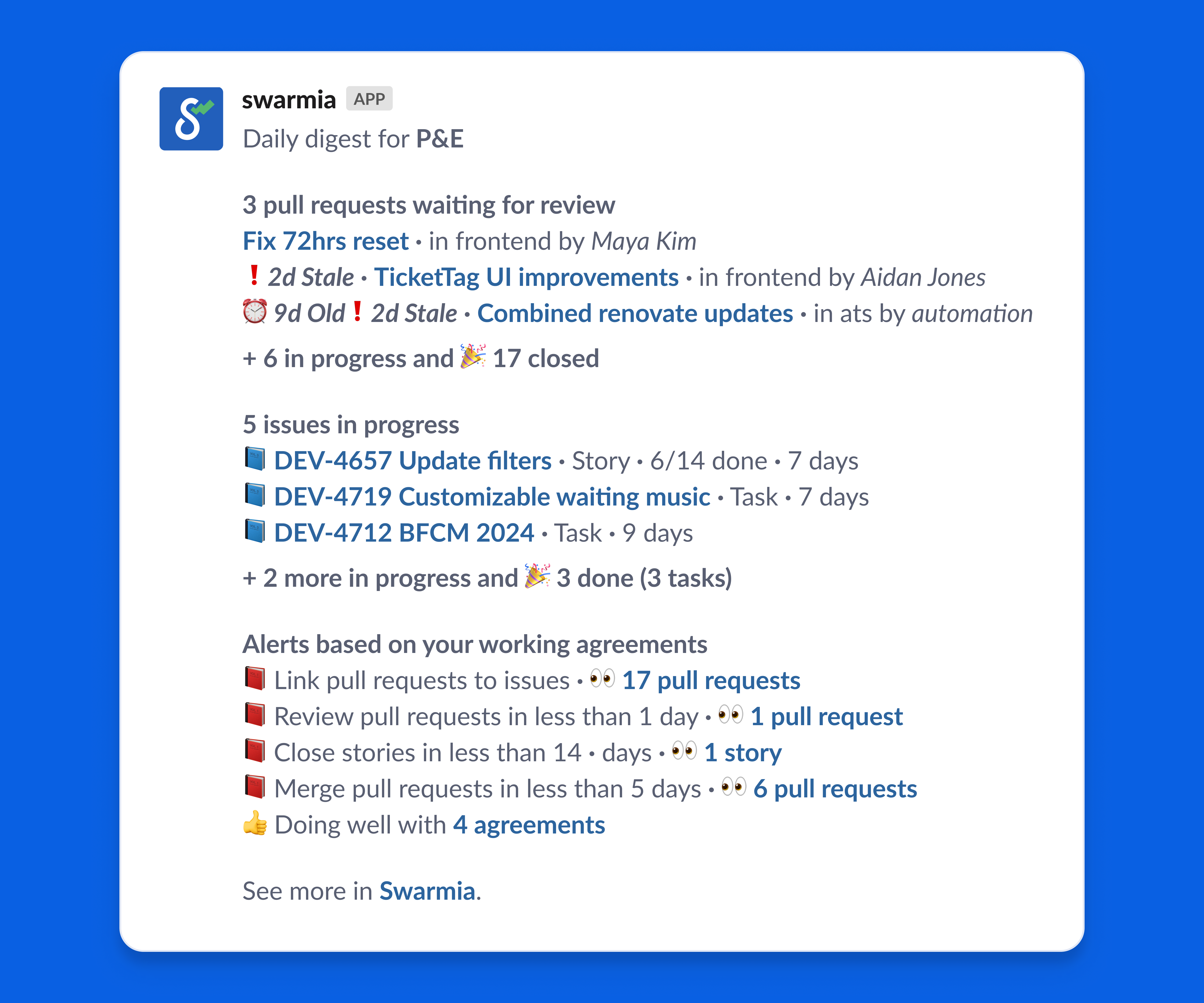
Many of the developers also adopted personal Slack notifications to help them stay on top of any ongoing discussions in the comments of their pull requests. Instead of having to jump between browser windows, they can quickly read, react to, and reply to GitHub comments without leaving Slack.

The Slack notifications in particular are excellent — way better than the GitHub ones. I was very surprised at how fast our engineers actually adopted Swarmia in their daily routine, and I’m sure the notifications played their part in that.
Co-Founder & CTO
Using DORA metrics to communicate with non-engineering leadership
Over time, DORA metrics have become an important tool for the Gorgias engineering organization. Alex uses them to inform the reliability roadmaps he’s building and ultimately, to measure the impact of organization-wide productivity initiatives.
DORA metrics are a good indicator of whether there’s something we should worry about. We can make hypotheses like ‘If we invest more in end-to-end testing, we should see our change failure rate drop by X percent.’ And that opens up interesting conversations.
Co-Founder & CTO
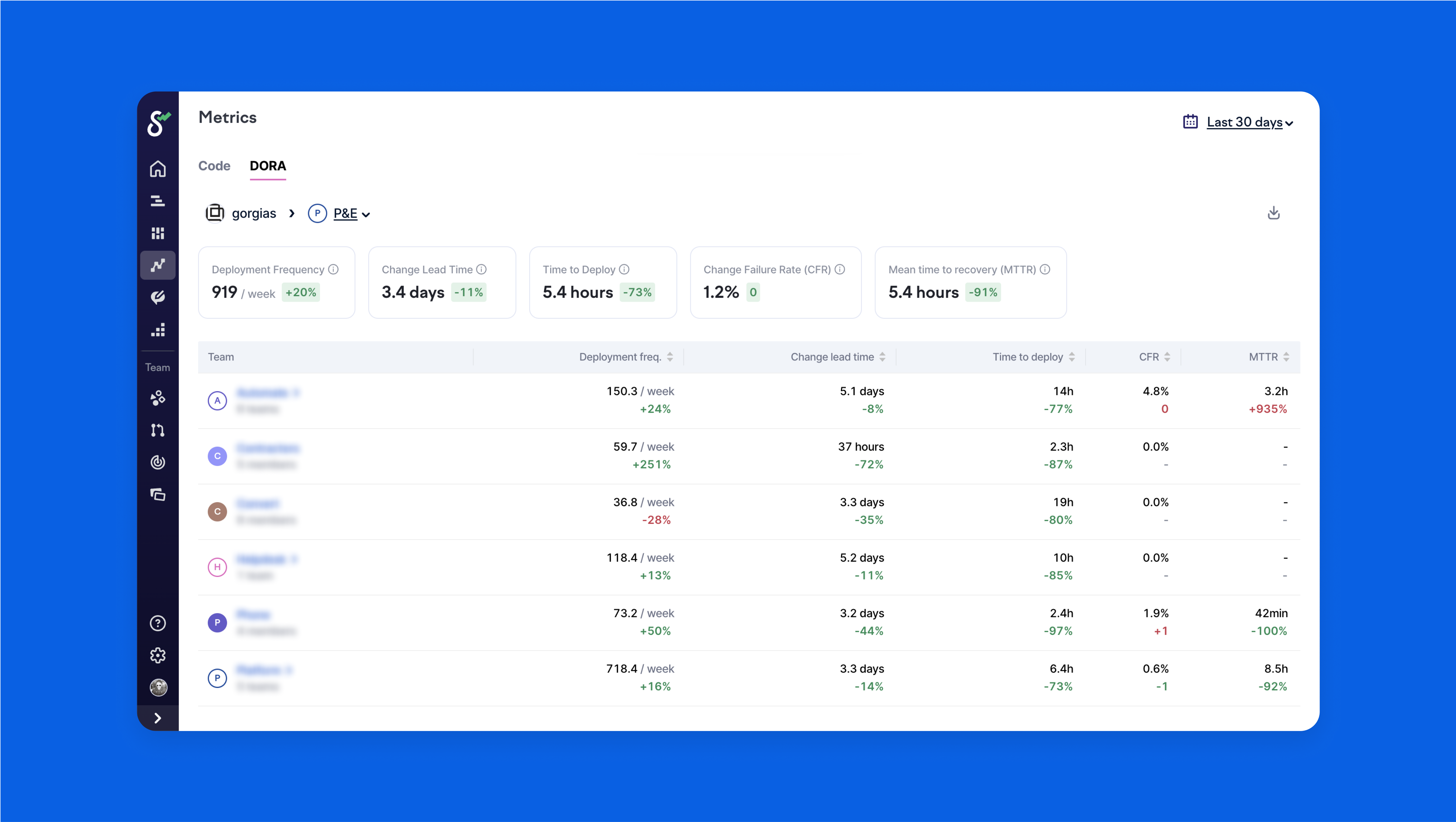
Alex has also found DORA metrics helpful in communicating about the health and speed of the engineering organization to his non-technical counterparts.
Having easy access to industry standard metrics like DORA reduces the friction between us and other departments. Engineering is typically one of the most expensive resources, and DORA metrics help us prove that we are still shipping fast without introducing too many new bugs to the system. It helps us have informed discussions with other functions.
Co-Founder & CTO
Complementing metrics with developer experience surveys
In addition to more traditional engineering metrics, Gorgias has also recently started experimenting with running developer experience surveys in Swarmia. By combining the two types of insights, they get a holistic understanding of developer productivity and developer experience.
What I like about running developer experience surveys in Swarmia is that it comes with a set of solid survey questions. After the survey has ended, we can see the qualitative and quantitative data in one place, which you don’t really get in any other tool.
Co-Founder & CTO
In fact, Alex says that if he was introduced to Swarmia today, he’d probably start by running a survey. The results are easy to understand, and unlike system metrics, the qualitative survey answers often contain practical ideas on how to improve the systems and processes that are getting in the way of great developer experience.
Creating software capitalization reports in minutes
Recently, Alex and his team have also spent a lot of time on creating software capitalization reports. Before Swarmia, this was a manual process that involved extracting issues from Linear, Gorgias’ issue tracker, to spreadsheets and making an estimate of how much engineering effort each Linear issue required.
In addition to being slow and painful to create, the manual reports were also difficult to consume as they consisted of hundreds of projects.
Manually mapping projects into initiatives used to take a lot of time. We collectively spent hundreds of hours in getting these reports to a shape where they were easy to consume, whereas now we can just set up investment categories in Swarmia and build our software capitalization reporting on top of that.
Co-Founder & CTO
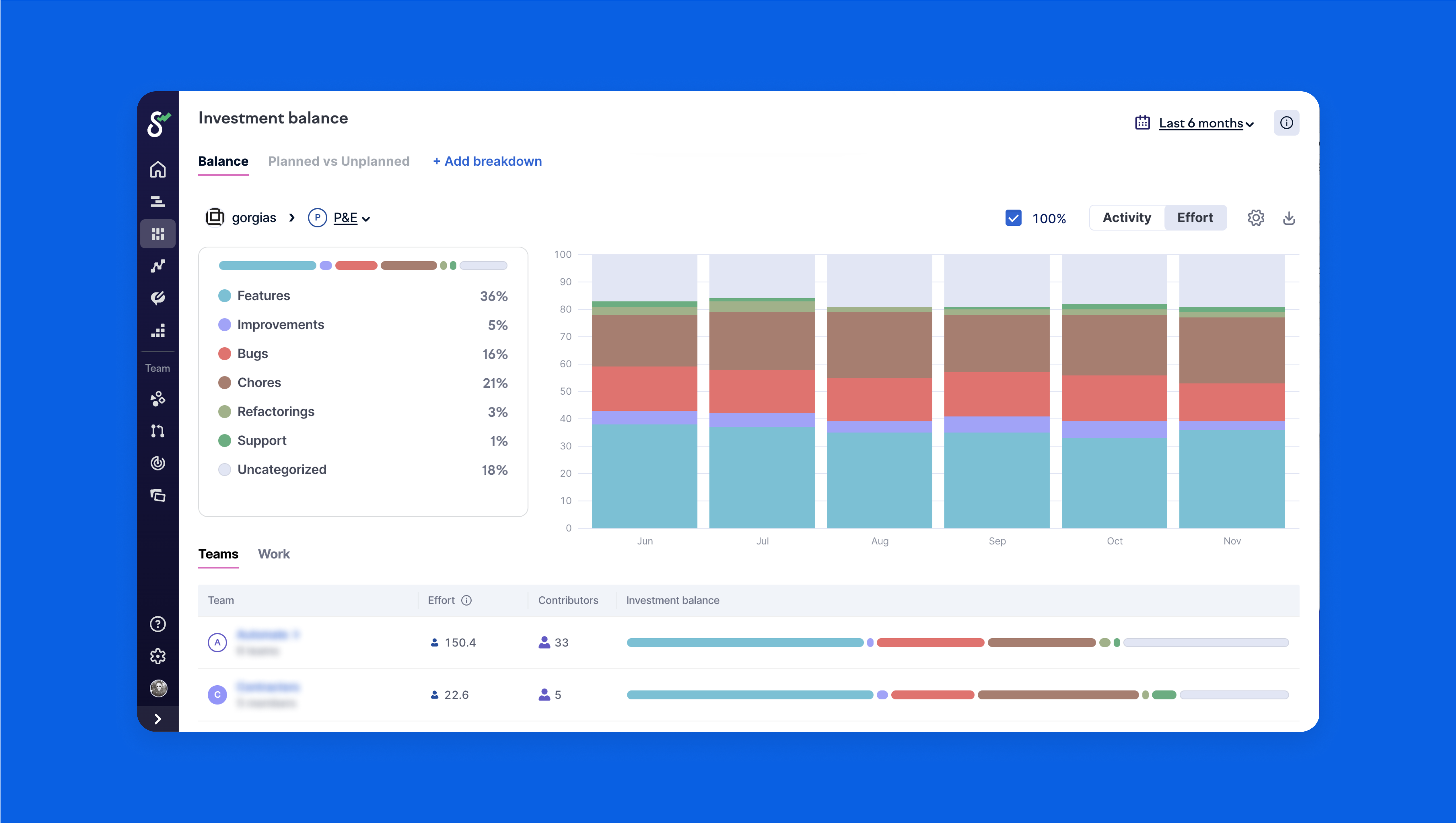
Better visibility, faster cycle times, and saving hundreds of hours in software capitalization reporting
After just two months of using Swarmia, Gorgias already started seeing promising results in the teams’ average pull request cycle times.
With Swarmia we’re able to highlight problem areas, set target levels, and drive continuous improvement. In just two months, we decreased our teams' cycle times by 40%.
Co-Founder & CTO

In addition to saving hundreds of hours of work with Swarmia’s software capitalization feature, Alex is also impressed with the high Swarmia adoption rate among the Gorgias engineers.
80-90% of our software engineers use Swarmia daily. They get better statistics, better notifications, and a better understanding of the things they can improve on a day-to-day basis.
Co-Founder & CTO
The individual contributors aren’t, however, the only active users of Swarmia at Gorgias. Today, Alex considers the platform as an integral part of the way the whole engineering organization operates and collaborates with the rest of the business.
Swarmia responds to the entire engineering organization’s needs. As a leader, I get a global, data-driven overview of what’s going on in my organization. It helps me drive informed discussions with not only the engineering managers and individual contributors but also other functions like finance and product.
Co-Founder & CTO

